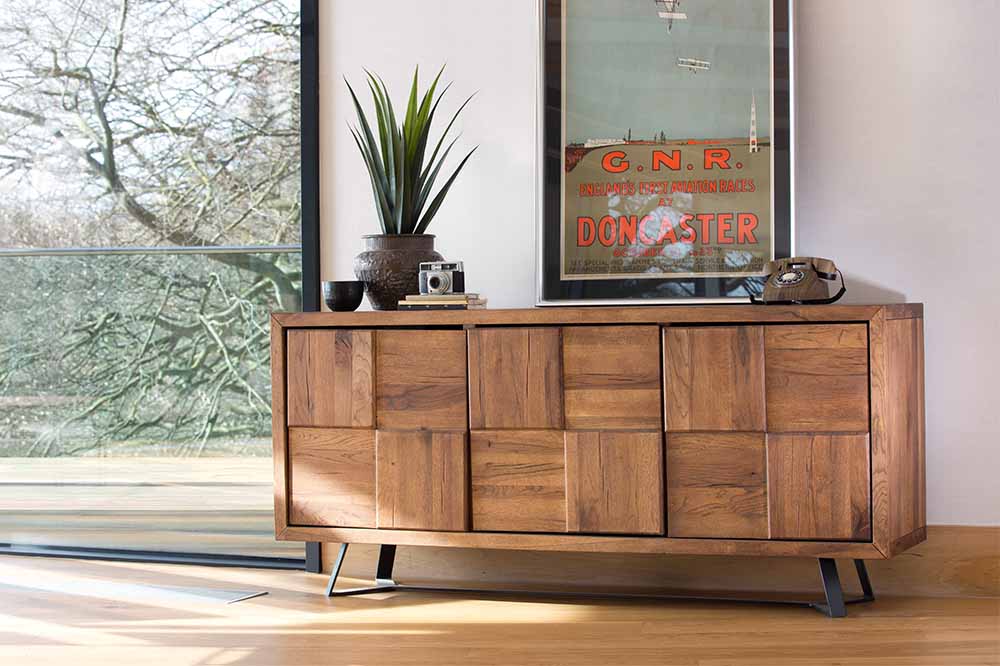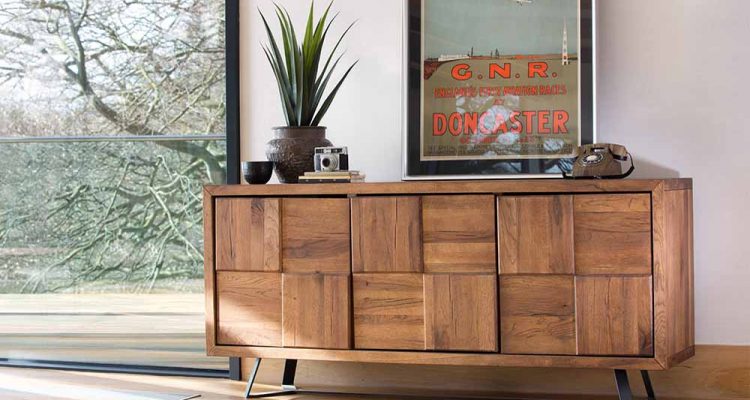
Introduction: Celebrating the Sideboard
The acclaimed designer Charles Eames once said, “The role of the designer is that of a very good, thoughtful host anticipating the needs of his guests.” This sentiment rings especially true when one considers the humble yet versatile sideboard. While its primary function is to provide storage in a dining room setting, the sideboard’s role goes well beyond that – it is an integral piece that can set the tone for the entire space.
Tracing the Sideboard’s Origins: From Utilitarian to Stylish
The sideboard, traditionally known as a “board” where food was served before being brought to the table, has evolved significantly over time. Once a practical, no-frills piece of furniture used primarily in Europe, it has transformed into a versatile and aesthetic component of the dining room.
Modern Sideboards: Embracing Style, Innovation, and Functionality
Today, sideboards come in a wide array of designs, materials, and sizes to cater to diverse tastes and needs. From sleek, modern designs featuring glass and steel to more traditional styles made of solid wood, there is a sideboard to complement every dining room.
In addition to style, modern sideboards have also embraced technology and innovation. Many now feature built-in lighting to highlight displayed items, adjustable shelves for versatile storage, and even temperature-controlled compartments to store wine.
Choosing the Perfect Sideboard: Factors to Consider
Picking the right sideboard for your dining room is not a task to be taken lightly. It requires careful consideration of several factors to ensure that it not only meets your storage needs but also enhances the overall aesthetics of your space. As the famous architect Frank Lloyd Wright stated, “Form follows function – that has been misunderstood. Form and function should be one, joined in a spiritual union.”
Here are a few considerations when choosing a sideboard:
- Size: The sideboard should be proportionate to your dining table and the room itself. An oversized sideboard can make a room feel crowded, while a small one may look out of place.
- Storage Needs: Consider what you plan to store in the sideboard. If you have a large collection of china or glassware, opt for a sideboard with glass-fronted doors to show off your collection. If you need a place to store linens or less display-worthy items, choose one with solid doors or drawers.
- Style: The style of the sideboard should ideally complement the rest of your dining room decor.
- Material: The material of the sideboard not only affects its appearance but also its longevity and maintenance. Solid wood sideboards, while durable and classic, can require more upkeep compared to those made from materials like metal or glass.
Conclusion: The Sideboard – A Harmonious Blend of Beauty and Utility
To conclude, a sideboard brings a harmonious blend of beauty and utility to your dining room. It provides essential storage, offers a platform for displaying your prized possessions, and contributes significantly to the overall aesthetic of the room. In the words of interior designer Bunny Williams, “If you love something, it will work. That’s the only real rule.” Choose a sideboard that speaks to you, and it will work wonderfully in your space, adding both functionality and elegance.

